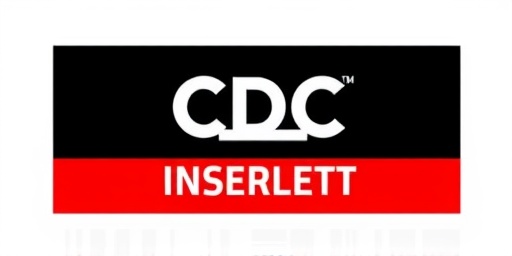Washington, DC – The Centers for Disease Control and Prevention (CDC) has sounded the alarm on a dramatic surge in respiratory syncytial virus (RSV) cases, with hospitalizations among children – particularly infants under six months – skyrocketing in over 20 states. As winter grips the nation, emergency rooms are overwhelmed, prompting the CDC to urge parents to adopt preventive measures immediately.
According to the latest CDC data released this week, RSV-related hospitalizations have jumped 78% in the past two weeks alone, affecting more than 29,000 young children nationwide. This surge mirrors patterns from previous winters but hits harder this season due to lingering immunity gaps from pandemic-era disruptions. “We are seeing levels not witnessed in years,” said Dr. Carmen Mondesir, a CDC epidemiologist, in a press briefing. “Parents need to act now to protect the most vulnerable.”
RSV Hospitalizations Explode in Southern and Midwestern States
The RSV surge is most acute in the South and Midwest, where warmer fall weather delayed the typical winter peak, leading to a more intense outbreak now. Texas, Florida, and Georgia report the highest numbers, with Texas alone logging over 5,000 pediatric hospitalizations since October. CDC’s Respiratory Virus Surveillance Network (RSV-NET) tracks show infants under one year accounting for 77% of cases, many developing severe bronchiolitis – a life-threatening inflammation of the small airways in the lungs.
In Atlanta, Children’s Healthcare of Atlanta has seen a 150% increase in RSV admissions compared to last year. “Our ICUs are at capacity,” said Dr. Andi Shane, pediatric infectious disease specialist. “We’re treating babies on oxygen for days, sometimes weeks.” Nationally, the CDC estimates this season could exceed 80,000 hospitalizations by spring, rivaling flu and COVID-19 burdens on pediatric wards.
- Key Hotspots: Texas (5,200+ cases), Florida (4,100), California (3,800)
- National Trend: 29,000+ hospitalizations through mid-December, up from 16,000 last year at this time
- Demographic Hit: 62% of cases in children under 2 years
Experts attribute the spike to crowded indoor gatherings post-Thanksgiving and low vaccination rates for eligible groups. The CDC’s nowcasting model predicts peak activity through January, urging hospitals to prepare for overflow.
Infants Under Six Months Bear Brunt of Deadly RSV Surge
Premature babies and those with underlying conditions like congenital heart disease face the gravest risks in this RSV surge. The virus, a common respiratory pathogen, typically causes mild cold-like symptoms in older children and adults but can trigger apnea, dehydration, and respiratory failure in newborns. CDC data reveals a 92% hospitalization rate for infected infants under three months.
Tragically, RSV claims 100-300 lives annually among US children under five, with most fatalities in those under one year. This season, at least 14 pediatric deaths have been linked to RSV, per preliminary reports. “It’s heartbreaking,” shared parent Maria Gonzalez from Houston, whose four-month-old spent 10 days in the PICU. “He was fine one day, gasping for air the next.”
Historical context underscores the crisis: Pre-pandemic, RSV peaked at 3-5% positivity in pediatric tests; now, it’s over 12% in surveillance sites. Climate factors, like the El Niño-driven mild fall, allowed prolonged community transmission, experts say.
| Age Group | Hospitalizations This Season | Increase vs. Last Year |
|---|---|---|
| Under 6 months | 18,500 | +95% |
| 6-24 months | 7,200 | +62% |
| 2-4 years | 3,300 | +45% |
CDC Rolls Out Targeted Prevention Tactics Amid Overwhelmed ERs
In response to the surge, the CDC has outlined clear preventive steps for families, emphasizing hand hygiene, masking in crowds, and avoiding sick contacts. “RSV spreads like wildfire through droplets and surfaces,” Dr. Mondesir advised. “Wash hands for 20 seconds, keep sick siblings away from babies, and clean high-touch areas daily.”
For high-risk infants, the CDC greenlights monoclonal antibodies like nirsevimab (Beyfortus), approved last year for newborns entering their first RSV season. Over 250,000 doses have been administered, but supply lags demand in surge states. The agency also promotes maternal RSV vaccination (Abrysvo) during pregnancy weeks 32-36, which passes antibodies to babies.
- Hygiene First: Soap and water over sanitizer for RSV.
- Isolation Protocols: No hospital visits for symptomatic adults.
- Vaccination Push: Eligible pregnant women and infants – consult pediatricians now.
- Daycare Caution: Delay enrollment for under-six-month-olds if possible.
Pediatricians nationwide echo these calls. The American Academy of Pediatrics (AAP) has activated surge protocols, advising telehealth for mild cases to ease ER strain.
Doctors Warn of Tripledemic: RSV, Flu, and COVID Overlap
This RSV surge coincides with rising flu and COVID-19, creating a “tripledemic” taxing healthcare systems. CDC wastewater surveillance shows all three viruses at high levels, with 15% of pediatric tests positive for multiple pathogens. “Co-infections amplify severity,” noted Dr. Shane. “A baby with RSV and flu needs ventilator support twice as often.”
Flu vaccinations stand at 45% for children, below the 55% goal, complicating containment. Quotes from the frontlines paint a dire picture: “We’re rationing beds,” said a Nashville ER physician. Public health officials are ramping up campaigns, with the CDC partnering with pharmacies for drive-thru shots.
Looking ahead, genomic sequencing reveals this season’s RSV strains are antigenically drifted, evading some prior immunity. Vaccine developers like Pfizer and GSK eye broader approvals, potentially curbing future surges by 80% in trials.
Parents Urged to Monitor Symptoms and Act Fast on Warning Signs
As the CDC surge alert reverberates, parents must recognize RSV red flags: rapid breathing over 60 breaths per minute in infants, wheezing, blue lips, or poor feeding. “Fever alone isn’t alarming, but respiratory distress is,” stresses AAP guidelines. Home pulse oximeters can help, but seek ER care if oxygen dips below 92%.
Community efforts are mobilizing: Schools in affected districts implement mask mandates, while nonprofits distribute hygiene kits to low-income families. The CDC’s Health Alert Network advisory reaches 1.2 million providers, prioritizing antiviral trials for severe pediatric cases.
Forward momentum includes FDA fast-tracking next-gen preventives and real-time dashboards for parents. “This surge is a wake-up call,” Dr. Mondesir concluded. “With vigilance and vaccines, we can blunt its edge and safeguard our littlest ones through winter.” Health departments forecast stabilization by late January if adherence peaks, but warn of prolonged strain without collective action.









